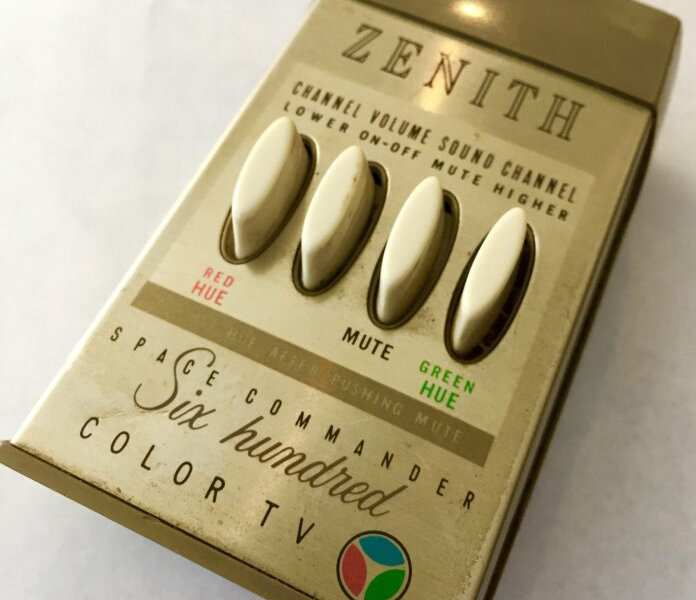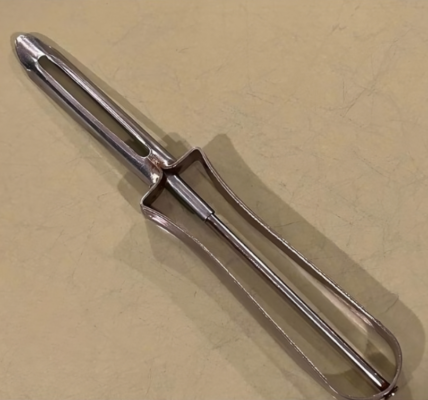Before the era of smart devices, there were simpler, yet groundbreaking gadgets that reshaped home entertainment. One such innovation was the Zenith Space Commander Six Hundred remote control, launched in the 1950s. This vintage remote wasn’t just another device; it marked a turning point in how people interacted with their TVs. Let’s journey back to a time when this device represented modern convenience and discover its story.
The Birth of a Television Revolution
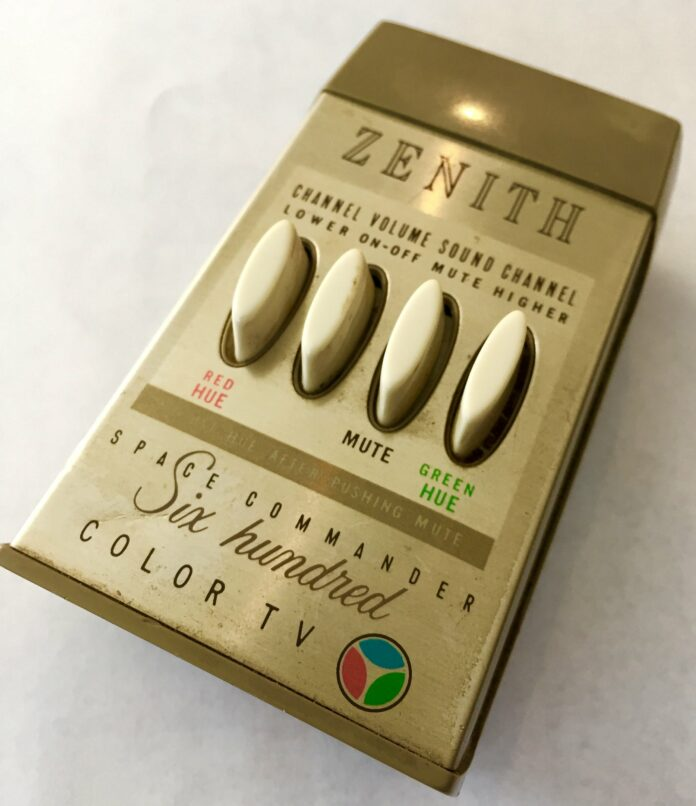
The 1950s were a period of rapid growth in American homes, with televisions becoming an essential part of living rooms. Yet, one problem persisted—adjusting the channel or volume meant getting up from the couch. It may seem trivial now, but back then, it was a daily annoyance. Seeking to solve this, Zenith Electronics, led by Dr. Robert Adler, introduced the Space Commander Six Hundred. This device was designed to make TV viewing more seamless, allowing users to control their sets with the push of a button.
Ingenious Design: The Unique Functionality of the Space Commander
The Space Commander Six Hundred wasn’t just notable for what it did, but how it worked. Unlike modern remotes that use infrared signals, this device operated through ultrasonic sound waves. It featured four basic buttons—On/Off, Channel Up, Volume Up, and Volume Down—each triggering a metal chime to emit a unique frequency. These frequencies, though inaudible to human ears, were detected by the TV receiver, allowing users to manage their TV from a distance.
A standout feature of this remote was that it didn’t require batteries. It relied on mechanical energy to produce ultrasonic sounds, making it both eco-friendly and virtually maintenance-free. Crafted with durable materials, the Space Commander was built to last, embodying an era when technology was designed for longevity.
How the Space Commander Became a Household Staple
The Zenith Space Commander Six Hundred quickly became a must-have gadget in American households. It offered a new level of convenience—no more getting up to change the channel or adjust the volume. With this remote, viewers could easily flip through channels or mute commercials without leaving their seats. It was a luxury that’s now taken for granted, but back then, it was nothing short of revolutionary.
The remote also redefined the living room dynamic, introducing the concept of “channel surfing.” Suddenly, changing channels during commercial breaks became a common practice, leading to playful family disputes over who got to hold the coveted device.
Ultrasonic Technology: A Quirky but Fascinating Mechanism
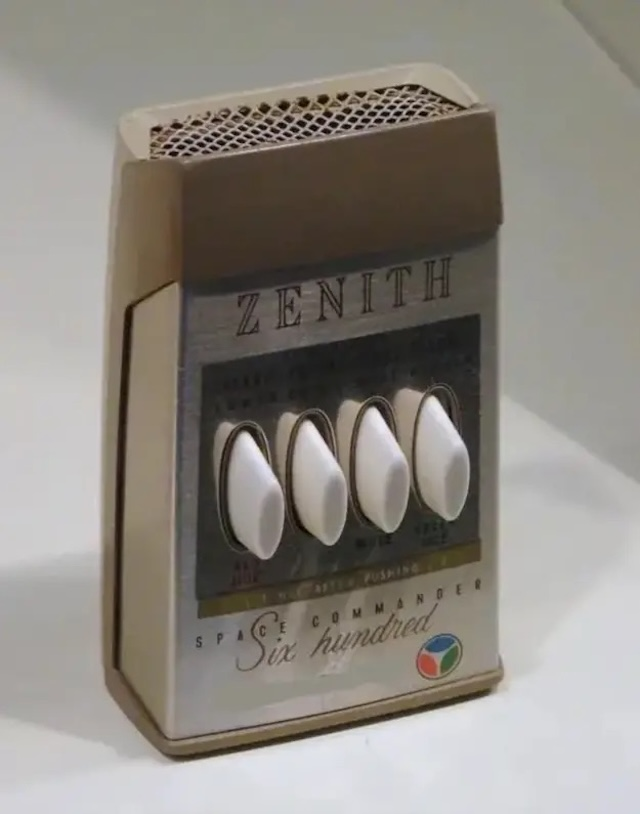
The Space Commander Six Hundred employed a fascinating mechanism. Each button activated a small hammer that struck a metal rod inside, producing an ultrasonic sound at a specific frequency. Televisions were designed to recognize these frequencies and execute commands accordingly.
However, this device wasn’t without its quirks. Occasionally, other high-pitched sounds—like jingling keys or even some dog whistles—could unintentionally change the channel or adjust the volume. While this was frustrating at times, it also added a layer of charm and nostalgia to this vintage gadget. Despite its occasional mishaps, the Space Commander proved to be resilient, reliable, and innovative—a glimpse into the potential of remote technology.
The Social Impact: Transforming TV Viewing Habits

The Zenith Space Commander Six Hundred did more than make TV viewing easier; it changed social dynamics around the television. For the first time, viewers could control their sets without moving from their seats. This convenience encouraged behaviors like channel flipping, making TV-watching more immersive and dynamic.
It also solidified television’s role as the leading entertainment medium. The ease of changing channels meant that viewers could explore more programming in a single sitting, transforming the way people engaged with television. The remote became a symbol of leisure, redefining what it meant to relax at home.
Fun Facts About the Space Commander Six Hundred
- Durability: Built to last, the Space Commander was often passed down through generations, a testament to its solid craftsmanship.
- Accidental Triggers: High-frequency sounds from other objects could sometimes trigger channel changes, creating unexpected and amusing TV moments.
- Battery-Free Operation: Its mechanical design meant no batteries were needed, a rarity in an age before disposable electronics became common.
- Minimalist Layout: With just four buttons, it offered a simple, user-friendly interface focused on core functions—power, channel change, and volume adjustment.
- Collectible Icon: Today, the Space Commander is a prized collectible among vintage tech enthusiasts, often displayed as a piece of early home entertainment history.
How the Space Commander Influenced Future Technology
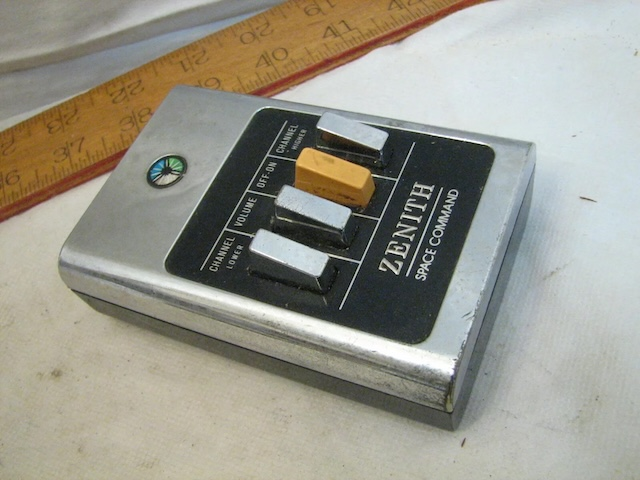
While not the first remote control, the Space Commander Six Hundred was the first to achieve widespread success. It proved that remote control technology could be both effective and user-friendly, paving the way for future advancements. Its success led to the development of infrared remotes in the 1980s, which became the new standard in TV controls.
The Space Commander set the foundation for modern remote technology, influencing everything from design to functionality. Its impact is still felt today, as it laid the groundwork for the user-friendly devices we now use to control everything from TVs to smart home gadgets.
The Nostalgia of a Bygone Era
For those who grew up with the Zenith Space Commander Six Hundred, it’s more than just a piece of vintage technology—it’s a symbol of a simpler time. It evokes memories of an era when watching TV was an event, and having a remote felt futuristic. Holding the Space Commander was like having a glimpse of the future in your hand, a sense of control that marked the beginning of the digital age.
Today, the Space Commander is a cherished relic, sought after not just for its historical value but for the memories it evokes. It serves as a reminder of a time when technology was designed to be both functional and fascinating, a testament to the early days of TV innovation.
Conclusion: The Remote That Shaped TV History
The Zenith Space Commander Six Hundred wasn’t just a remote control; it was a game-changer that redefined convenience in home entertainment. It transformed how viewers interacted with their televisions, making it the catalyst for a more relaxed, user-friendly TV experience.
While it may seem basic compared to today’s multifunctional remotes, the Space Commander Six Hundred holds a special place in technology history. It represents an era of innovation, nostalgia, and the start of a more engaging home entertainment experience. For those who remember its era, it remains a nostalgic symbol of the golden age of television.
